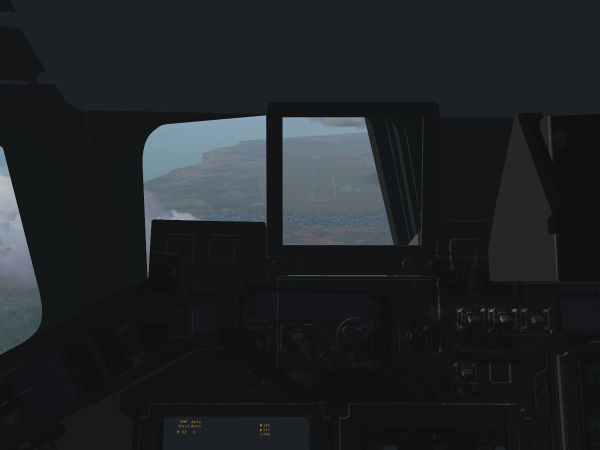Flying the Shuttle - Final Approach
| Space flight |
|---|
| in FlightGear |
| Space Shuttle |
| Vostok-1 |
| Note This article refers to the SpaceShuttle in the FGAddon repository. |
This mission phase can directly be started using --aircraft=SpaceShuttle-approach on the command line.
What are we trying to do?
In the very last part of its flight, the Space Shuttle flies like an airplane. Yet,it's design is a compromise between a small launch weight, a body that is suitable for hypersonic aerobraking and can withstand the heat generated by atmospheric entry and aerodynamical flight. As a result, it's aerodynamics is more similar to a brick than to a glider. Even at its best, the glide ratio is about 4.5, much less during supersonic flight.
As a result, the glidepath is fairly steep (about 17 degrees, more than five times of what a commercial airliner flies on approach) and the touchdown speed is unusually high (about 200 kt). Yet, the landing gear of the shuttle is as fragile as a normal landing gear, thus touchdown has to be gentle. And since the Shuttle is a glider, there is just one chance.
The tasks during final approach are
- bring the Shuttle safely to the runway, allowing for a variation of different energies
- perform a soft touchdown on all three wheels
- bring the Shuttle to a stop on the runway
How it feels in FG
The aerodynamics of the Space Shuttle in FG is taken from a large body of wind tunnel data, i.e. both basic capabilities like L/D and details such as the response to airfoils is fairly realistic.
As in reality, the rudder of the spacecraft is controlled by guidance logic to minimize sideslip, i.e. the rudder pedals should normally not be needed unless side slip is explicitly desired. At subsonic velocities, the Shuttle is dynamically stable which makes it fairly easy to fly.
The final approach starts at an altitude of about 10.000 ft, some eight miles from touchdown. The runway seems very far below at this point.
Push the shuttle down to a 17 - 20 degree glideslope from here. This is steeper than it's optimum glidepath, so use speedbrake to control the approach speed to about 340 - 350 kt. The aim point for the nose is a little before the runway. Make sure you have good visibility to do this, in reality the Shuttle is just re-routed to a different landing site if the weather is bad, there are no provisions for an IFR approach.
